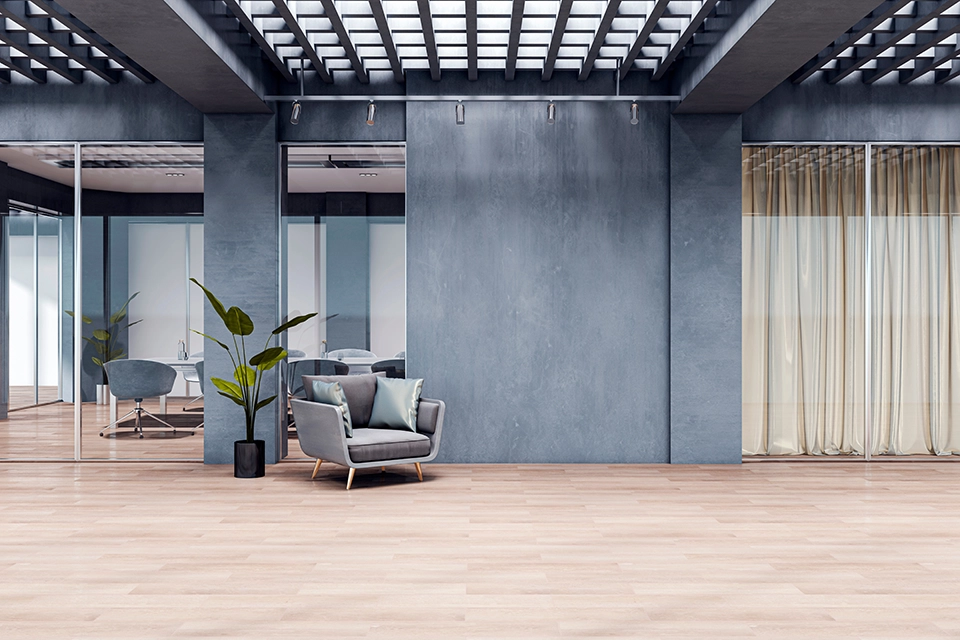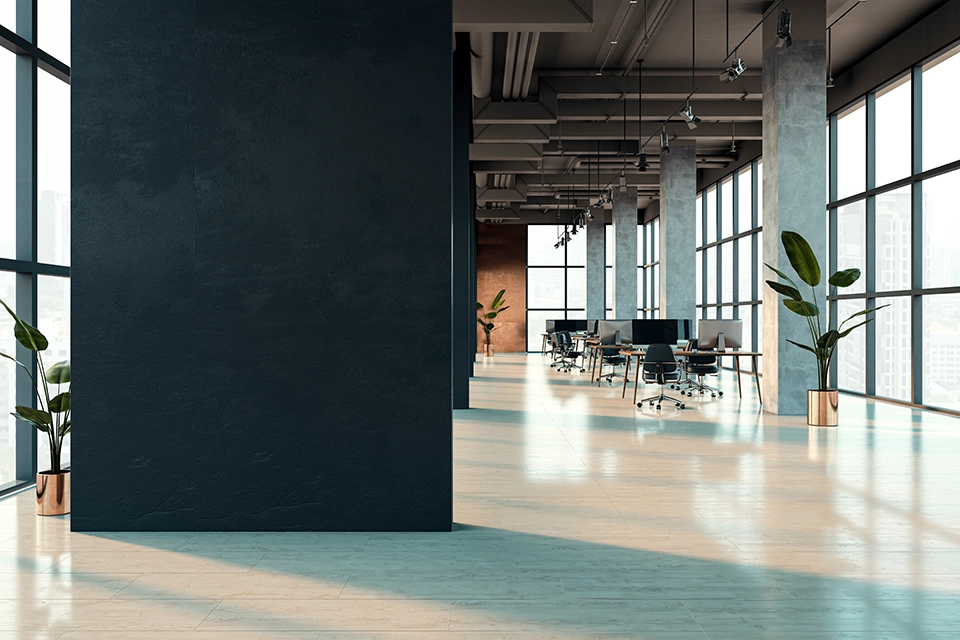The Role of Natural Light in Boosting Workplace Morale
30-04-2025 | 5m read

3. The Science Behind Sunlight and Morale
4. Designing with Daylight: Key Strategies
5. 1. Maximize Window Exposure
6. Choose Light-Reflective Materials
7. Integrate Skylights and Clerestory Windows
8. Use Daylight-Mimicking Systems
9. Combine with Biophilic Elements
10. The Benefits of Natural Light in the Workplace
11. 1. Boosts Mood and Motivation
12. 2. Increases Focus and Productivity
13. 3. Reduces Fatigue and Eye Strain
14. 4. Strengthens Company Culture
15. 5. Supports Physical Health
16. Designing for Light: The Morpho Dimensions Approach
If there’s one element that consistently enhances both employee morale and workplace productivity, it’s natural light. Yet, in many offices, workers spend most of their day under artificial lighting, disconnected from the sunlight that fuels energy and positivity.
At Morpho Dimensions, we know that designing for light isn’t just an aesthetic choice—it’s a wellbeing strategy. The right lighting design can improve mood, boost focus, and foster a sense of connection to the natural world.
In this article, we’ll explore why natural light is so vital for workplace morale and how you can incorporate it effectively into your office design.

Humans are naturally wired to respond to sunlight. It regulates our circadian rhythms—the internal clock that controls sleep, energy, and alertness—and triggers the release of serotonin, a hormone linked to happiness and focus.
When employees spend too much time in dim or fluorescent lighting, they may experience:
Eye strain and fatigue
Low mood and decreased motivation
Irregular sleep patterns
Reduced productivity
On the other hand, offices that prioritize daylighting experience a clear shift: employees feel more energized, focused, and positive.
Numerous studies highlight the connection between natural light and employee wellbeing:
Workers in naturally lit environments report 51% higher alertness levels.
Access to daylight increases happiness and job satisfaction scores by up to 40%.
Natural light exposure improves sleep quality by 46 minutes per night, enhancing energy and focus during the workday.
Sunlight affects more than the body—it impacts the emotional climate of a workplace. Bright, open, well-lit spaces feel uplifting and safe, while dark, artificial environments can feel draining and isolating.
At Morpho Dimensions, we believe great office design uses light as both a functional and psychological tool. Here’s how to make natural light work for your space.
Position frequently used workstations near windows.
Avoid tall furniture or partitions that block light flow.
Use glass walls and transparent dividers to allow light to travel deeper into the space.
Even small adjustments in furniture layout can significantly increase daylight penetration.
Walls, floors, and ceilings can amplify daylight when finished with light, matte surfaces that reflect rather than absorb light.
Pro Tip: White, soft gray, or natural wood tones are excellent for spreading light evenly and creating an airy, uplifting atmosphere.
For deeper office interiors or upper floors, skylights and clerestory windows provide direct access to sunlight while maintaining privacy. These architectural elements add brightness without glare.
In areas where natural light is limited, circadian lighting systems can simulate the rhythm of daylight—bright in the morning, warmer and softer in the afternoon—to support energy levels and comfort.
Light and nature work beautifully together. Pair natural lighting with plants, wood textures, or living walls to create a calming, restorative environment that reduces stress and enhances wellbeing.

Natural light influences every aspect of the employee experience—from motivation to physical health.
Sunlight triggers serotonin production, improving happiness, optimism, and enthusiasm. A well-lit office encourages a more positive work atmosphere.
Employees exposed to daylight work faster, make fewer errors, and show up to 18% higher performance in cognitive tasks.
Natural light is easier on the eyes than artificial lighting, reducing headaches and visual discomfort during long work hours.
A bright, open office feels inviting and energetic—qualities that reinforce team morale and shared purpose.
Regular daylight exposure helps regulate vitamin D levels, supports better sleep, and lowers stress hormones—all of which contribute to a healthier workforce.

At Morpho Dimensions, we design office environments that celebrate natural light while balancing comfort and aesthetics.
Our lighting design principles include:
Human-centric design: Lighting that supports biological and emotional needs.
Zoned illumination: Adapting light levels for collaboration, focus, or relaxation areas.
Energy efficiency: Combining natural and artificial lighting to minimize waste.
Aesthetic harmony: Using light to highlight materials, textures, and brand identity.
We don’t just design spaces that look brighter—we create environments that feel alive.
One of our clients—a creative agency—struggled with low morale in a windowless, fluorescent-lit workspace. After a Morpho Dimensions redesign, we introduced:
Open window lines and glass partitions
Reflective light-colored surfaces
Daylight-mimicking fixtures in central zones
Indoor plants and warm wood tones
The result? Within three months, employee satisfaction scores rose by 28%, and the company reported noticeable improvements in engagement and energy.
Natural light is one of the simplest yet most powerful ways to improve workplace morale. It connects people to their environment, enhances focus, and promotes emotional wellbeing.
Designing with daylight is not just about aesthetics—it’s about creating a workspace where people can shine, literally and figuratively.
At Morpho Dimensions, we specialize in creating offices that embrace light, life, and balance—spaces where your team can truly thrive.
Ready to brighten your workspace—naturally?
Partner with Morpho Dimensions to design a light-filled office that energizes and inspires your team.
Visit: www.morphodimensions.com
Conference rooms are no longer just enclosed boxes with long tables and static screens. In the era of hybrid teams,...
Conference rooms are no longer just enclosed boxes with long tables and static screens. In the era of hybrid teams,...
Conference rooms are no longer just enclosed boxes with long tables and static screens. In the era of hybrid teams,...